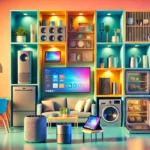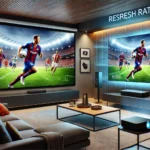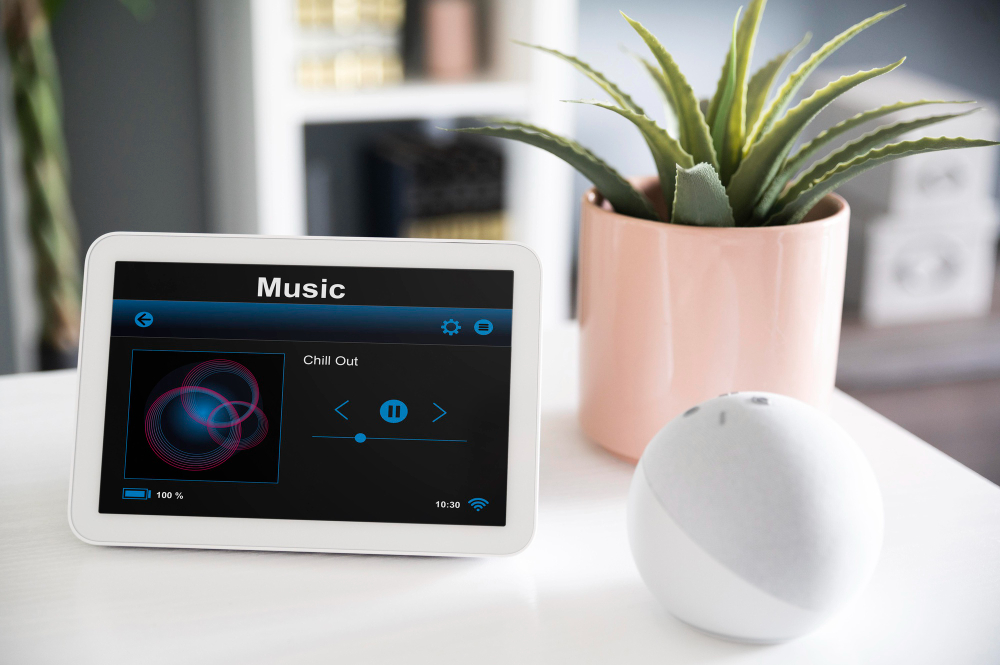To integrate smart devices with your home theater, start by evaluating your current setup and identifying which components are compatible with smart technology. Choose smart speakers and lighting systems that support connectivity protocols like Wi-Fi or Zigbee. Connect these devices to a central smart hub for streamlined control and configure them through their respective apps. Optimize your experience by using applications that provide multi-device management and voice command capabilities. Enhance your home theater with automation features, such as scheduling and mood lighting, which can be synchronized with your viewing content for a more immersive experience. Further insights await.
Key Takeaways
- Assess your current setup to ensure compatibility of existing equipment with smart devices and check for spatial and acoustic considerations.
- Choose smart devices like speakers and lighting that integrate well with your home theater system and support necessary communication protocols.
- Connect devices to a central smart hub for streamlined control and configure them via their apps, ensuring firmware is up-to-date.
- Utilize dedicated applications for managing your home theater, focusing on user-friendly interfaces and features like multi-device control and voice commands.
- Enhance your experience with automation by programming lighting and voice control to sync with movie content and create tailored environments.
Assess Your Current Setup
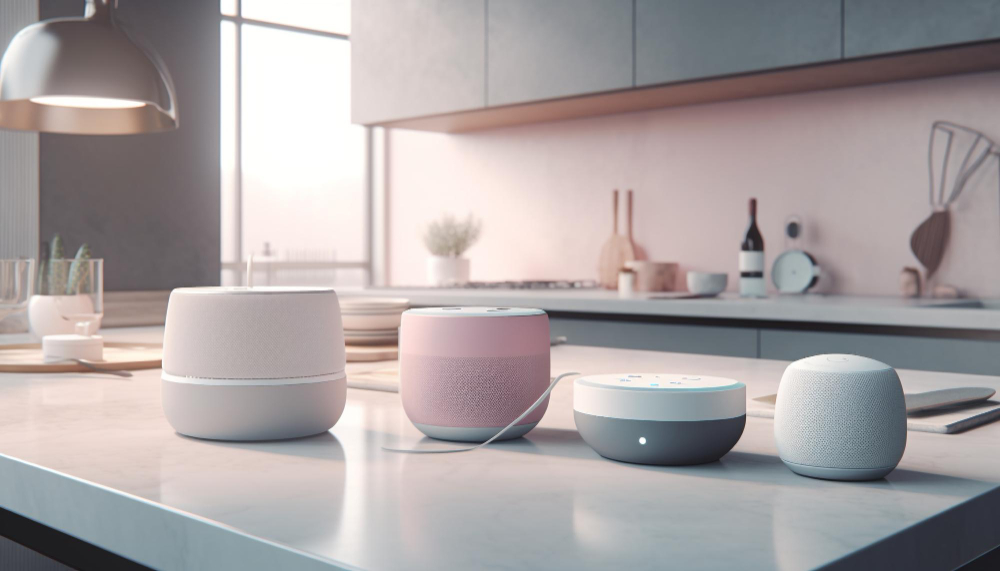
Before integrating smart devices into your home theater, it is crucial to assess your current setup to understand its capabilities and limitations. This evaluation begins with identifying your current equipment, including displays, audio systems, and connectivity options. Understanding their specifications will help determine compatibility with potential smart devices, guaranteeing that you can leverage the full potential of enhanced functionality.
Next, consider the spatial layout of your home theater. Space limitations can greatly impact the types of devices you can incorporate. For instance, if your area is constrained, compact smart devices or multi-functional equipment may be more suitable. Evaluating room acoustics and visual obstructions is also critical, as these factors influence audio and video performance.
Furthermore, assess the existing wiring and network infrastructure. Reliable internet connectivity is paramount for ideal smart device performance, so verify that your current setup can accommodate any additional demands. By thoroughly understanding your current equipment and space limitations, you will be better positioned to make informed decisions when selecting the right smart devices, ultimately enhancing your home theater experience.
Choose Compatible Smart Devices
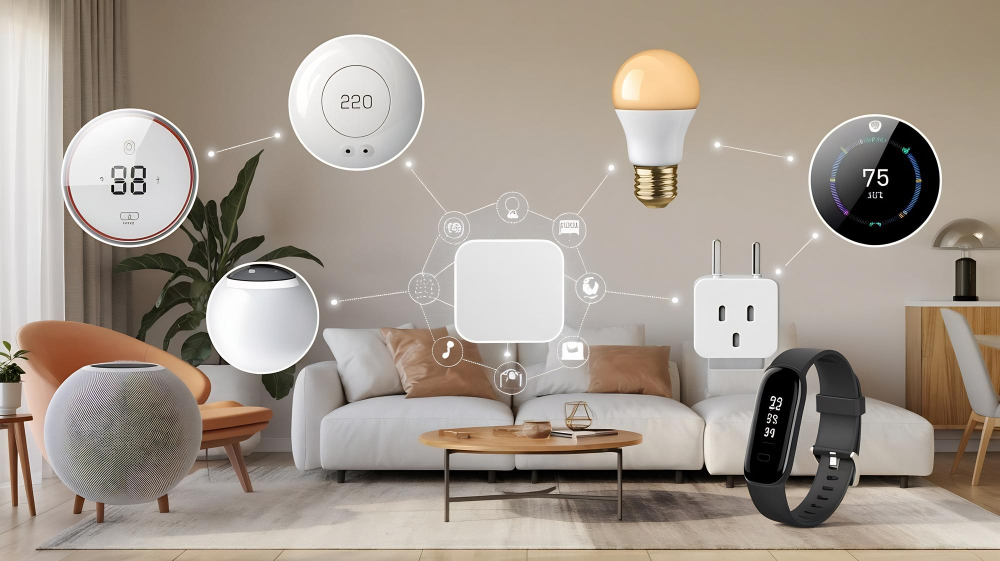
Selecting compatible smart devices is essential for optimizing your home theater experience. When choosing devices, consider those that seamlessly integrate with your existing ecosystem. Smart speaker integration is a key component; devices like Amazon Echo or Google Nest can enhance your audio experience and provide voice control for your entertainment systems. Ascertain that your smart speakers are compatible with your streaming devices and sound systems to facilitate a cohesive audio experience.
Additionally, explore lighting control options that can be integrated into your home theater setup. Smart lighting solutions, such as Philips Hue or Lutron, allow you to create the ideal ambiance for movie nights and gaming sessions. These systems can be programmed or controlled via voice commands, further enhancing the convenience of your home theater.
Always verify that the devices you choose support common protocols such as Wi-Fi, Zigbee, or Z-Wave, guaranteeing they can communicate effectively with one another. By selecting compatible smart devices, you lay the groundwork for a unified and efficient home theater system, leading to an immersive entertainment experience that is both sophisticated and user-friendly.
Connect and Configure Devices
When integrating smart devices into your home theater, establishing a reliable connection and proper configuration is vital for peak performance. Begin by connecting your smart devices to a central smart hub, which will streamline communication and control across all devices. Verify that your smart hub is compatible with the devices you’ve chosen, as this will greatly enhance functionality and ease of use.
Once connected, configure each device through its respective app. This step often involves setting up remote access, allowing you to control your home theater system from anywhere. It is important to update the firmware of each device to guarantee top performance and security.
Below is a simple guide for connecting various devices:
| Device Type | Connection Method | Configuration Steps |
|---|---|---|
| Smart TV | Wi-Fi or Ethernet | Use TV app for setup |
| Streaming Device | HDMI and Wi-Fi | Follow on-screen instructions |
| Sound System | Bluetooth or Optical | Pair devices through app |
Optimize Control With Apps
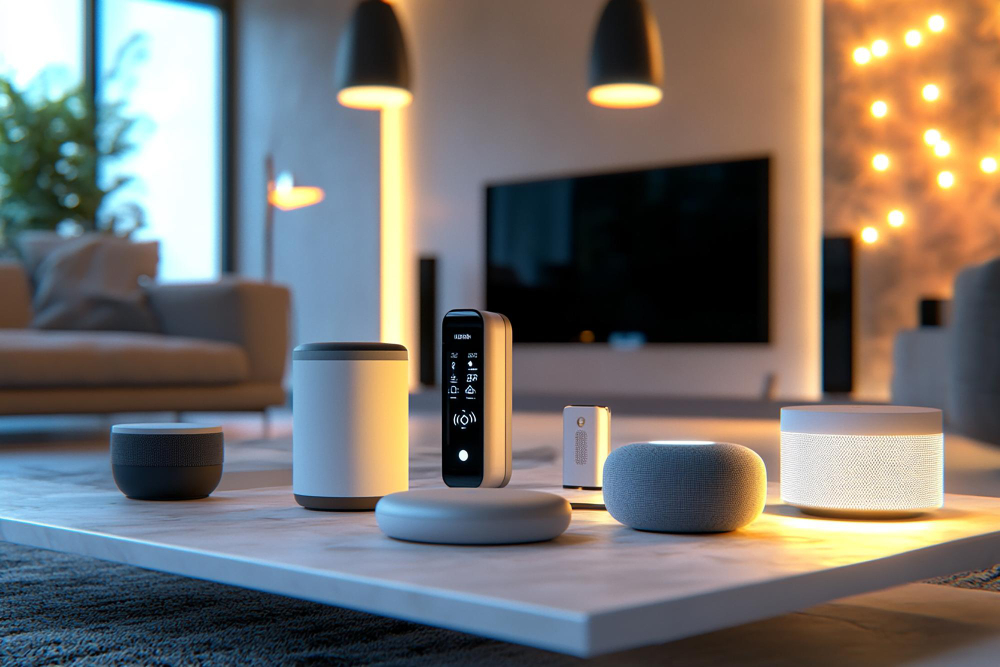
After successfully connecting and configuring your smart devices, the next step is to refine control using dedicated applications. These apps are critical for managing and customizing the various functionalities of your home theater system. A well-designed app serves as a central hub, providing seamless interaction with all connected devices.
To maximize efficiency, select applications that offer robust app functionalities tailored to your specific devices. Look for features such as multi-device control, scene creation, and remote access, which enhance usability and convenience. Additionally, consider applications that support voice commands, integrating with virtual assistants for hands-free operation.
User interfaces play a substantial role in the overall experience. An intuitive layout guarantees that essential controls are easily accessible, reducing the learning curve for users. Prioritize applications with customizable dashboards, allowing you to arrange controls according to personal preferences.
Regular updates from app developers can enhance performance, providing new features and security enhancements. Verify that your selected applications are regularly maintained and compatible with the latest smart device firmware to guarantee peak performance. By effectively utilizing these applications, you can achieve a streamlined control system for your home theater.
Enhance Experience With Automation
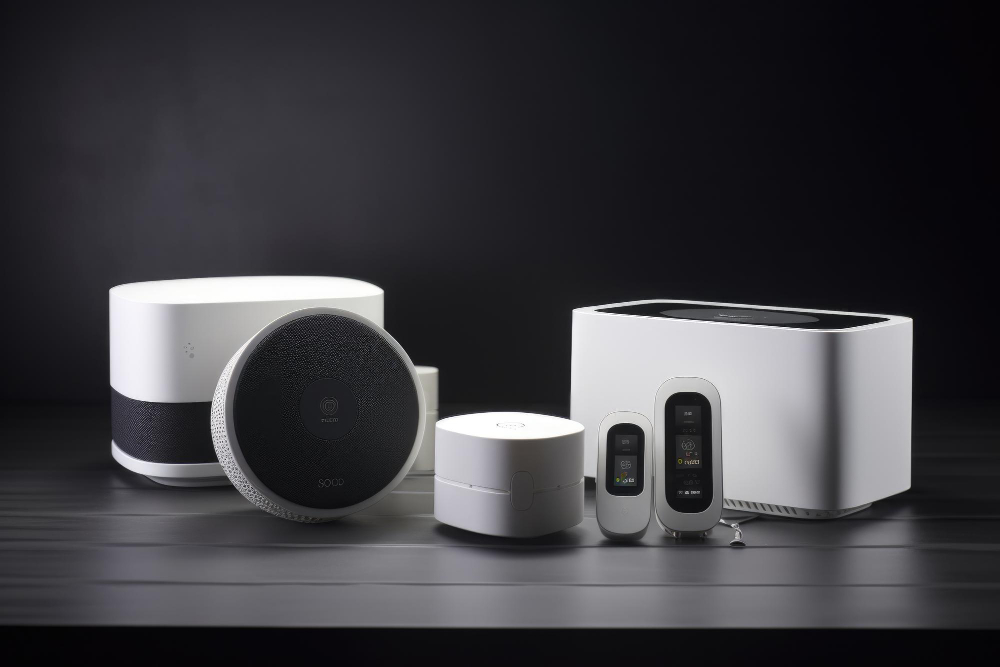
Automation serves as a powerful tool to elevate the home theater experience, allowing users to create a more immersive and convenient environment. By integrating smart devices, homeowners can streamline operations and enhance the overall viewing experience. One of the key components of automation is voice control, which enables users to manage their home theater systems effortlessly. Through voice commands, users can adjust volume levels, switch inputs, and even select streaming content without the need for a remote control.
Additionally, automated lighting plays a significant role in setting the mood for movie nights or gaming sessions. Smart lighting systems can be programmed to dim or change colors in conjunction with the content being viewed, providing an engaging atmosphere. For instance, the lights can gradually dim as a film begins, immersing viewers in the cinematic experience.
Furthermore, scheduling automation can allow users to pre-set their home theater environment, ensuring that everything is ready upon arrival. By combining voice control and automated lighting, homeowners can achieve a seamless integration of technology that not only enhances convenience but also transforms the way they enjoy their home entertainment systems.
Frequently Asked Questions
Can I Integrate Non-Smart Devices With My Smart Home Theater?
Integrating non-smart solutions with a smart home theater is feasible through device compatibility layers such as HDMI adapters, IR remote controls, or smart hubs, enabling seamless operation and enhanced functionality of legacy devices within a modern setup.
What Is the Best Smart Hub for Home Theater Integration?
When it comes to selecting a smart hub for home theater integration, consider options that offer robust smart hub features and extensive compatibility options. These factors will guarantee seamless connectivity and enhanced functionality across your devices.
Are There Any Security Risks With Smart Home Devices?
Smart device vulnerabilities pose significant risks to home network security. Inadequate protection measures can allow unauthorized access, leading to data breaches or compromised privacy. It is essential to implement robust security protocols to mitigate these threats effectively.
How Can I Troubleshoot Connectivity Issues With Smart Devices?
To troubleshoot connectivity issues with smart devices, assess the Wi-Fi signal strength, ensuring it is adequate. Additionally, verify device compatibility with your network and other connected devices to resolve potential integration conflicts.
Do Smart Devices Consume More Electricity Than Traditional Devices?
Research indicates that smart devices can be up to 30% more energy efficient than traditional devices. Device comparison reveals that, while initial consumption may seem higher, long-term usage often results in reduced energy costs and increased efficiency.
Conclusion
The integration of smart devices into home theater systems enables enhanced functionality and user experience. Research indicates that approximately 45% of households in the United States currently utilize smart home technology, illustrating the widespread adoption of these innovations. By strategically connecting and configuring compatible devices, users can optimize control and automate processes, leading to a seamless entertainment experience. The potential for improved interactivity and convenience within home theaters underscores the significance of this technological advancement.



